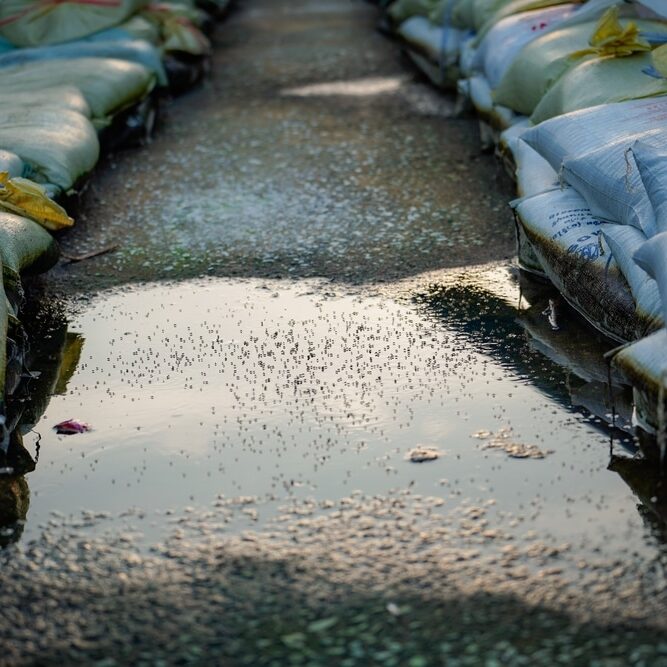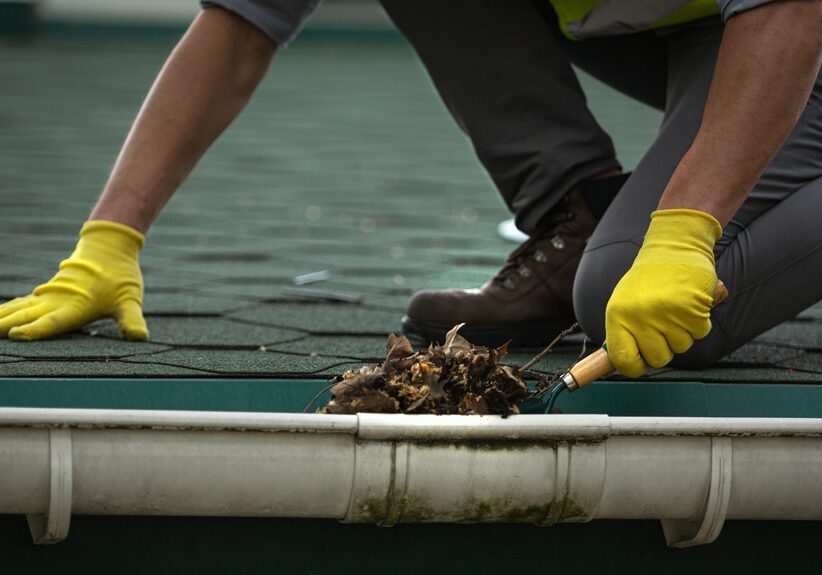When it comes to controlling mosquitoes around your home, the most common advice you’ll hear is to eliminate standing water. And that’s for good reason—standing water is the primary breeding ground for mosquitoes. However, effective standing water management is about much more than just draining visible puddles or emptying containers. It requires a comprehensive approach to identifying, treating, and preventing all potential mosquito habitats on your property.
In this post, we’ll explore why standing water is so critical to mosquito breeding, the variety of water sources that serve as mosquito nurseries, the challenges homeowners face in managing these sites, and why professional mosquito control services take a multi-layered approach to keep mosquitoes at bay. Understanding these factors will empower you to protect your home and family from these persistent pests effectively.
Why Standing Water Is Crucial for Mosquito Breeding
Mosquitoes require water to complete their lifecycle. From eggs to larvae to pupae, each stage depends on a water environment. Female mosquitoes lay their eggs on the surface of stagnant water or in areas that will soon flood. The eggs hatch into larvae, which live underwater and feed on organic matter, before developing into pupae and eventually emerging as flying adults.
What many homeowners don’t realize is that mosquitoes don’t need large pools of water to breed. Even tiny amounts—such as the water collected in a bottle cap, clogged gutter, or flower pot saucer—can support dozens or even hundreds of mosquitoes. This makes managing standing water a vital part of mosquito control.
There are two broad categories of standing water habitats:
- Natural sources: These include ponds, marshes, tree holes, and flood plains. These areas can sustain large mosquito populations but are often beyond direct homeowner control.
- Artificial or man-made sources: Common around residential areas, these include birdbaths, gutters, clogged drains, discarded tires, buckets, pet water dishes, and other containers that hold water.
Effective mosquito control means addressing both types where possible, especially the artificial sources near homes where mosquito-human contact is highest.

Common Types of Standing Water That Harbor Mosquitoes
Homeowners often drain the obvious puddles or empty water containers, but many mosquito breeding sites are hidden or overlooked. Some common types of standing water include:
Natural Water Sources
-
Ponds and Lakes:
Large natural bodies of water can harbor mosquito larvae, especially along stagnant edges.
-
Marshes and Wetlands:
These wetlands provide ideal mosquito breeding habitats due to abundant shallow water.
-
Tree Holes:
Rainwater collected in tree cavities creates small pools perfect for certain mosquito species.
-
Flooded Fields and Low-Lying Areas:
Seasonal flooding leaves temporary pools where mosquitoes breed rapidly.
Artificial or Man-Made Water Sources
-
Clogged Gutters and Downspouts:
Leaves and debris block water flow, creating standing pools.
-
Birdbaths and Pet Water Dishes:
Water that is not changed regularly offers a perfect breeding site.
-
Flower Pots and Plant Saucers:
Often overlooked, these small containers can accumulate rainwater.
-
Discarded Tires, Buckets, and Trash:
Items left outdoors can fill with rain and become mosquito nurseries.
-
Rainwater Collection Barrels:
Unless properly sealed and maintained, these can harbor mosquito larvae.
Identifying and managing these varied water sources around your property is essential to preventing mosquito proliferation.
Challenges in Managing Standing Water for Mosquito Control
Despite best intentions, standing water management can be challenging for homeowners, especially because:
-
Hidden or Inaccessible Breeding Sites
Not all standing water is easy to see or reach. Mosquitoes can breed in underground drainage systems, roof gutters, or dense vegetation holding water. Without a thorough inspection, these sites often go untreated.
-
Intermittent or Temporary Water Sources
Rainfall and weather conditions can create new breeding spots that last only a few days or weeks but are enough to sustain mosquito populations. Puddles, clogged drains, and water collected in debris can appear suddenly after storms.
-
Urban Development and Landscaping
New construction, landscaping changes, and irrigation systems can unintentionally create mosquito habitats. Poorly designed drainage or overwatering lawns lead to water pooling.
-
The Size and Number of Potential Sites
Even a small yard can have dozens of potential mosquito habitats, making manual elimination time-consuming and often incomplete.
These challenges highlight why simply draining visible water isn’t sufficient for long-term mosquito control.
Effective Standing Water Management Strategies Beyond Draining
Managing standing water successfully involves a multi-pronged approach that combines elimination, treatment, and prevention.
This involves removing or modifying mosquito breeding habitats:
- Eliminate unnecessary containers that collect water like buckets, tires, and old toys.
- Regularly clean gutters and drains to prevent blockages.
- Empty and refresh birdbaths and pet water dishes at least twice a week.
- Fill low spots or depressions in yards where water pools.
- Manage irrigation and watering schedules to avoid overwatering and puddling.

The Role of Professional Mosquito Control Services in Standing Water Management
While homeowners play a vital role, professional mosquito control services are key to comprehensive standing water management. Here’s how experts add value:
Thorough Inspections and Identification
Professionals use trained eyes and specialized equipment to identify hidden or hard-to-reach breeding sites that might be missed by homeowners.
Integrated Mosquito Management Plans
Experts combine standing water management with other control methods such as adulticide sprays, barrier treatments, and seasonal monitoring to maximize effectiveness.
Customized Treatments
Treatment plans are tailored to the specific property and local mosquito species, accounting for seasonal changes and weather patterns.
Eco-Friendly Practices
Many pest control companies employ environmentally responsible approaches that protect beneficial insects and wildlife while targeting mosquitoes effectively.
By partnering with a professional service, homeowners can ensure standing water management is thorough, ongoing, and part of a wider mosquito control strategy.
Making Standing Water Management Part of Your Mosquito Control Routine
Managing standing water is fundamental—but it’s only one part of a successful mosquito control program. Combining diligent water management with other control tactics helps keep mosquito populations low and your outdoor spaces enjoyable.
For homeowners, this means:
- Staying vigilant year-round, not just in summer months.
- Inspecting your property regularly for new or hidden water sources.
- Practicing routine yard and property maintenance to eliminate breeding grounds.
- Working with mosquito control professionals for expert advice, treatments, and ongoing support.
At Emtec Pest Control, we are committed to safe and responsible pest control. We understand that your family’s safety is your number one priority, so we make it our priority, too.
If you have any other questions about any of these pests or pest control for your home or business, contact your Oklahoma pest control experts at Emtec Pest Control by calling us or by filling out our online contact form.
